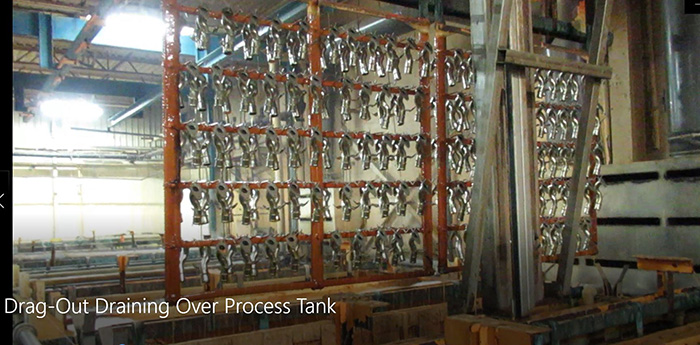Toxic Release Inventory (TRI) Pollution Prevention Data
Annually, most metal finishing facilities must submit Toxic Release Inventory (TRI) data by July 1 for the previous calendar year. Among the requirements of TRI reporting, industry must submit information to track progress in reducing waste generation and moving towards better waste management alternatives. In their TRI report some facilities volunteer descriptions of measures they have taken to prevent pollution and reduce the amount of toxic chemicals entering the environment. As a result, TRI serves as a tool for identifying effective environmental practices and highlighting pollution prevention (P2) successes. TRI data are publicly accessible on EPA's TRI Toolbox.
STERC analyzed recent TRI data (2023) to observe what metal finishing facilities are doing in terms of P2. The results of this investigation are summarized in the table below. Column 1 lists the TRI P2 codes most frequently utilized by metal finishers. Column 2 indicates the number of facilities that reported under that code. Column 3 is the sum of waste reduced (from 2022 to 2023) by the reporting facilities. Column 4 presents the methods voluntarily provided by the facilities.
In column 4 there is some overlap of methodology from one P2 code to another. For example, training is mentioned under nearly all of the P2 codes. However, what stands out from this analysis is that waste reduction progress is not complicated. In most cases, it involves:
-
Communications (e.g., team meetings),
-
Employee training, and
-
Process monitoring/control.
And to a lesser extent, it may involve:
-
Process modifications, or
-
Equipment purchases
Another key observation is the frequency of which rinsing methods and more specifically drag-out reduction are mentioned. Of the 34 specific P2 methods mentioned by facilities 10 (29%) involve improved rinsing.
In general, P2 methodologies are not capital intensive. They often involve simple changes to procedures, such as rinsing. The TRI reporting facilities also tell us that communications and training are important components to an overall program aimed at reducing waste.
STERC provides a wealth of information relative to P2 and especially rinsing and drag-out reduction. Examples of these resources include:
-
Pollution Prevention and Control Technologies for Plating Operations (2nd edition). Published by the National Center for Manufacturing Sciences (NCMS), Ann Arbor, MI. this is the most widely referenced book on this subject. The text is now available on-line at no cost. It contains detailed discussion of improved rinsing waste reduction approaches, bath maintenance, processes substitution, chemical recovery, and more.
-
Rinsing Manual. This manual was produced by the National Center for Manufacturing Sciences (NCMS) through an EPA Grant with assistance from NASF. The purpose of this manual is to help metal finishing facilities improve their rinsing processes. Better rinsing is crucial for high quality production. At the same time, a well-chosen rinse system can save water and minimize sludge generation, leading to reduced pollution and lower operating costs.
- Rinsing Systems Calculator. A sophisticated interactive tool that calculates flow requirements and other parameters for multiple rinse tank configurations. The tool takes into account process bath type and concentration, tank temperatures, surface area of parts, drag-out rates, and rinsing criterion.

Summary of P2 Methodologies Utilized by Metal Finishing Companies
|
Description of TRI P2 Method (Code) |
No. of Facilities Implementing P2 Code |
Waste Reduction, lbs. |
Facility Specific P2 Methods Implemented |
|
Optimized process conditions to increase efficiency (TRI Code S21) |
21 |
171,146 |
|
|
Other improvements to operating practices and training (TRI Code S44) |
17 |
122,171 |
|
|
Improved scheduling, record keeping, or procedures for operations, cleaning, and maintenance (TRI Code S24) |
24 |
31,944 |
|
|
Substituted manufacturing aid, processing aid, or other ancillary chemical (TRI Code S04) |
4 |
31,932 |
|
|
Modified content, grade, or purity of a chemical input (TRI Code S03) |
6 |
6,124 |
|
|
Totals |
72 |
363,317 |

